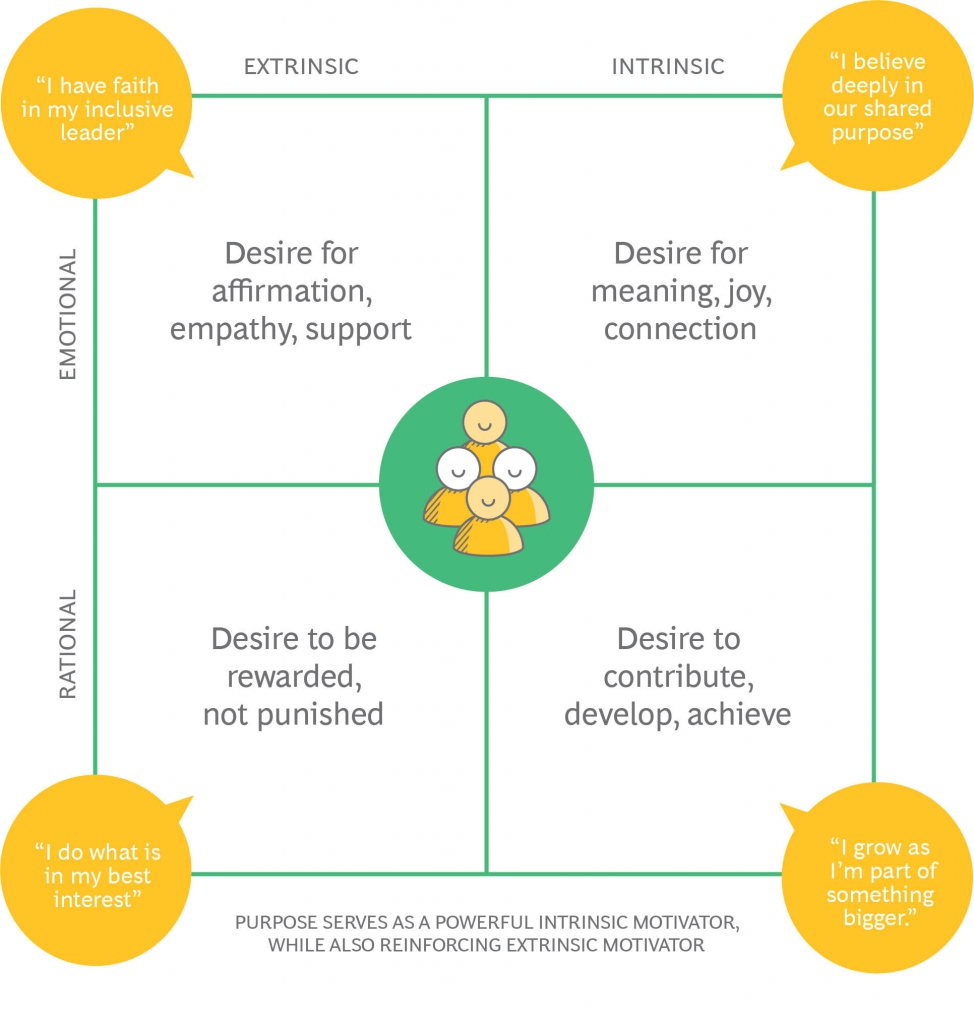The shift in employees’ expectations, together with the demands of always-on transformation, has further exposed the shortcomings of attempting to influence people through carrots and sticks. In far too many transformation programs, people are treated as a means to an end or, worse, as collateral damage.
Employees expect more from an employer than a paycheck. Finding meaning in one’s job and being part of an inclusive community have become more important, especially to millennials. These goals have also become more important as digital technologies proliferate and the opportunity for face-to-face interactions with colleagues and customers diminishes. People want to work for an organization that values social and environmental responsibility—that strives to make the world a better place, not just to make more money. This desire to contribute meaningfully simply can’t be instilled through carrots and sticks. Additionally, far too many transformation programs treat people as interchangeable resources – as quantifiable means to an end on a spreadsheet or in the worst-case scenario: entirely expendable.
To counter this tendency, organizations are realizing the need to appeal to head and heart with intrinsic, not just extrinsic, motivators. Extrinsic motivators focus on individuals’ desire to be rewarded (rather than punished) and to have their contributions recognized by leaders and peers. Intrinsic motivators include employees’ desire for meaning, connection, and joy in their work, as well as the desire to contribute, develop, and achieve. (See illustration.) Purpose is one of the most powerful intrinsic motivators because it speaks to both the head (as the compass that guides and aligns behaviors) and the heart.

Take, for example, Always, the maker of feminine-hygiene products. To shift employees’ orientation beyond the concept of selling everyday sanitary products, leaders tapped into the brand’s purpose—helping women achieve their full potential—for a key market segment, adolescent girls. The company revisited its education partnership with schools, as well as its marketing efforts, to expand the focus beyond hygiene and biology to include bolstering girls’ self-confidence. Connecting to this segment in this way proved to be highly motivating to employees as well as inspiring to customers.
At BrightHouse, we combine strategy with creativity to create moving and motivational work that moves hearts and minds. By leveraging both the rational and the emotional side of intrinsic motivators, we help people understand both the bigger vision of purpose and the important role they can individually play. Find out more about how the transformative power of purpose by reading our recent white paper: Purpose with the Power to Transform.
And look for more information about our thought leadership here at BrightHouse on the blog. Be sure to follow us on Twitter and LinkedIn for the latest insights on purpose.